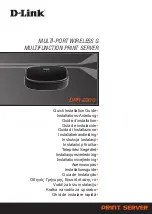
Recovering
BIOS
If
your
BIOS
has
become
corrupted,
such
as
from
a
power
failure
during
a
flash
update,
you
can
recover
your
BIOS
using
the
recovery
boot
block
and
a
BIOS
flash
diskette.
Note:
You
can
obtain
a
BIOS
flash
diskette
from
one
of
the
following
sources:
v
Use
the
ServerGuide
program
to
make
a
BIOS
flash
diskette.
v
Download
a
BIOS
flash
diskette
from
the
World
Wide
Web.
Go
to
http://www.pc.ibm.com/support/,
select
IBM
Server
Support,
and
make
the
selections
for
your
server.
The
flash
memory
of
your
server
contains
a
protected
area
that
cannot
be
overwritten.
The
recovery
boot
block
is
a
section
of
code
in
this
protected
area
that
enables
the
server
to
start
up
and
to
read
a
flash
diskette.
The
flash
utility
recovers
the
system
BIOS
from
the
BIOS
recovery
files
on
the
diskette.
To
recover
the
BIOS:
1.
Turn
off
the
server
and
peripheral
devices
and
disconnect
all
external
cables
and
power
cords;
then,
remove
the
cover.
2.
Locate
the
boot
block
jumper
(J37)
on
the
system
board.
3.
Place
a
jumper
on
pins
1
and
2
to
enable
BIOS
recovery
mode.
4.
Insert
the
BIOS
flash
diskette
into
the
diskette
drive.
5.
Restart
the
server.
The
Recovery
Boot
screen
will
appear.
A
progress
report,
Loading
data
from
diskette
xx
%,
is
displayed.
When
programming
is
underway,
a
further
progress
report,
Programming
block
n
of
7
yy%
,
is
displayed.
When
recovery
is
complete,
Recovery
complete,
remove
the
diskette
and
return
boot
block
switch
to
the
off
position
before
rebooting
is
displayed.
6.
Remove
the
flash
diskette
from
the
diskette
drive.
7.
Turn
the
server
off.
8.
Remove
the
jumper
on
the
boot-block
jumper
block
or
move
pins
2
and
3
to
return
to
normal
startup
mode.
9.
Restart
the
server.
The
system
should
start
up
normally.
Troubleshooting
the
Ethernet
controller
This
section
provides
troubleshooting
information
for
problems
that
might
occur
with
the
10/100
Mbps
Ethernet
controller.
Network
connection
problems
If
the
Ethernet
controller
cannot
connect
to
the
network,
check
the
following:
v
Make
sure
that
the
cable
is
installed
correctly.
The
network
cable
must
be
securely
attached
at
all
connections.
If
the
cable
is
attached
but
the
problem
persists,
try
a
different
cable.
If
you
set
the
Ethernet
controller
to
operate
at
100
Mbps,
you
must
use
Category
5
cabling.
If
you
directly
connect
two
workstations
(without
a
hub),
or
if
you
are
not
using
a
hub
with
X
ports,
use
a
crossover
cable.
Note:
To
determine
whether
a
hub
has
an
X
port,
check
the
port
label.
If
the
label
contains
an
X
,
the
hub
has
an
X
port.
18
Hardware
Maintenance
Manual:
xSeries
230
Models
6RY,
61Y
Summary of Contents for xSeries 230 6RY
Page 1: ...Hardware Maintenance Manual xSeries 230 Models 6RY 61Y...
Page 2: ......
Page 3: ...Hardware Maintenance Manual xSeries 230 Models 6RY 61Y...
Page 20: ...12 Hardware Maintenance Manual xSeries 230 Models 6RY 61Y...
Page 38: ...30 Hardware Maintenance Manual xSeries 230 Models 6RY 61Y...
Page 48: ...40 Hardware Maintenance Manual xSeries 230 Models 6RY 61Y...
Page 126: ...118 Hardware Maintenance Manual xSeries 230 Models 6RY 61Y...
Page 132: ...124 Hardware Maintenance Manual xSeries 230 Models 6RY 61Y...
Page 167: ...Related service information 159...
Page 168: ...160 Hardware Maintenance Manual xSeries 230 Models 6RY 61Y...
Page 169: ...Related service information 161...
Page 170: ...162 Hardware Maintenance Manual xSeries 230 Models 6RY 61Y...
Page 171: ...Related service information 163...
Page 172: ...164 Hardware Maintenance Manual xSeries 230 Models 6RY 61Y...
Page 173: ...Related service information 165...
Page 174: ...166 Hardware Maintenance Manual xSeries 230 Models 6RY 61Y...
Page 184: ...176 Hardware Maintenance Manual xSeries 230 Models 6RY 61Y...
Page 185: ...Related service information 177...
Page 186: ...178 Hardware Maintenance Manual xSeries 230 Models 6RY 61Y...
Page 193: ......
Page 194: ...Part Number 19K6112 Printed in USA 1P P N 19K6112...
















































